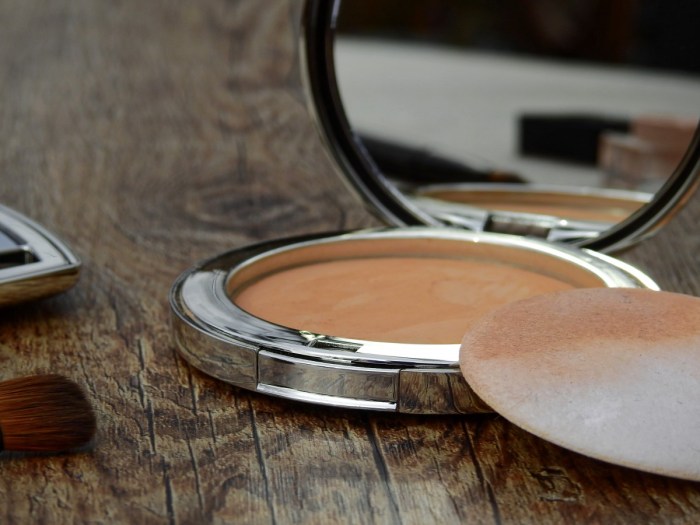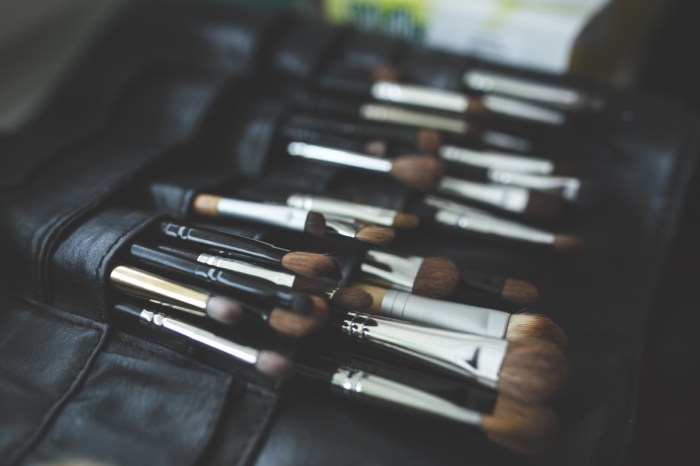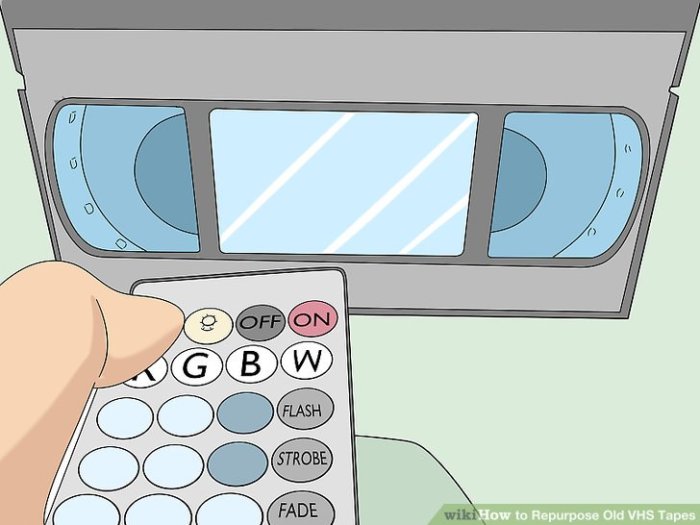Cross Stitch vs Embroidery sets the stage for this enthralling narrative, offering readers a glimpse into a world of intricate designs and meticulous craftsmanship. From their historical roots to modern applications, this comparison explores the fascinating differences between these two popular needle arts. We’ll delve into stitching techniques, materials, and the creative process behind each craft, highlighting their unique characteristics and comparing their tools and supplies.
This exploration will equip you with the knowledge to choose the craft that best suits your artistic vision and skill level. We’ll analyze the nuances of each, from the precise “X” shapes of cross stitch to the flowing lines and varied stitches of embroidery, ultimately helping you decide which craft is the perfect fit for your next creative project.
Introduction to Cross Stitch and Embroidery

Cross stitch and embroidery are two popular needle arts with rich histories. They’ve been used for centuries to decorate clothing, household items, and artistic creations. Both crafts involve meticulously stitching threads onto fabric, but their techniques, tools, and intended results differ significantly. Understanding these distinctions is key to appreciating the unique charm of each craft.Cross stitch and embroidery, while both using needles and threads, differ significantly in their approaches.
Cross stitch relies on a structured, repetitive pattern of crosses, while embroidery employs a wider range of stitches to create more complex and varied designs. This fundamental difference extends to the tools and materials required, leading to distinct artistic outcomes.
Fundamental Differences
Cross stitch and embroidery, though both needle arts, differ in their techniques, tools, and materials. Cross stitch is characterized by the creation of crosses, whereas embroidery offers a vast array of stitches to create more detailed and complex designs. The materials and tools used are also crucial to the craft’s outcome.
Tools and Materials Comparison
| Craft | Tools | Materials | Description |
|---|---|---|---|
| Cross Stitch | Needle, Embroidery Floss, Aida Cloth | Various floss colors, pattern | Cross stitch utilizes a specific type of needle, often blunt, to create the cross-shaped stitches on a pre-printed pattern. Aida cloth, a fabric with evenly spaced holes, is a common choice. Embroidery floss, available in a wide array of colors, is used to create the cross stitch pattern. The pattern guides the stitcher through the process. |
| Embroidery | Needle, Embroidery Floss/Thread, Fabric | Various colors, patterns | Embroidery uses a variety of needles, often sharp, and various threads or floss. The choice of fabric is more flexible, ranging from linen to cotton to silk, and can be plain or patterned. Embroidery patterns offer more creative freedom, allowing the stitcher to embellish or create entirely new designs. |
Historical Context
Cross stitch, often associated with intricate patterns and detailed designs, has roots in medieval Europe. Early examples of cross stitch were used for religious purposes, decorative textiles, and household items. Over time, it transitioned into a more widely practiced craft, often incorporating secular themes and patterns. Embroidery, with its diverse applications, boasts an even longer history. Ancient civilizations utilized embroidery for adornment and decoration, and the craft evolved through various cultures, adopting specific styles and techniques unique to each region.
Stitching Techniques
Cross stitch and embroidery, though both textile art forms, utilize distinct stitching techniques. Understanding these differences is crucial for appreciating the unique aesthetics and capabilities of each craft. The specific stitches employed greatly influence the final look and feel of the project, allowing for diverse expressions and artistic interpretations.
Cross Stitch Stitches
Cross stitch, renowned for its intricate patterns and precise execution, primarily revolves around the creation of “X” shapes. This fundamental element gives cross stitch projects their characteristic look. Variations in cross stitch technique are possible, including fractional stitches, and different ways to arrange and fill the stitches.
Embroidery Stitches, Cross Stitch vs Embroidery
Embroidery boasts a wide array of stitches, each with its own visual characteristics and practical applications. From the simple running stitch to the elaborate satin stitch, the possibilities are nearly endless. These stitches can be used individually or combined in complex patterns, allowing for a vast array of design possibilities. Embroidery stitches offer a flexibility in expression that complements the structure of the fabric.
Comparison of Stitch Complexity
Cross stitch often demands higher precision due to the need for consistent “X” shapes. This requires meticulous planning and attention to detail, which is a hallmark of the craft. Embroidery, conversely, allows for more freedom in stitch variation and application, providing a wider range of possibilities in terms of aesthetics. The flexibility of embroidery allows for adaptation to different fabrics and textures.
Common Cross Stitch and Embroidery Stitches
| Stitch Type | Craft | Description | Illustration |
|---|---|---|---|
| Running Stitch | Embroidery | A continuous stitch, moving forward and backward in a straight line, often used for outlining or creating simple lines. It’s a fundamental stitch, simple to learn, and provides a clean, even look. | Imagine a series of small, evenly spaced, straight lines, connected to each other in a continuous flow, both forward and backward. |
| Back Stitch | Embroidery | This stitch creates a robust, visible line. It’s made by stitching forward, then backing up to the starting point, forming a distinct “V” shape. | Visualize a series of “V” shapes formed by stitching forward and then backward along a line. |
| Cross Stitch | Cross Stitch | The defining stitch of cross stitch, forming an “X” shape. Typically, the stitches are executed with precision and regularity to create patterns. | Picture two intersecting lines that create a complete “X” shape. The lines are made by passing the needle through the fabric in a crisscross manner. |
| French Knot | Embroidery | A small, rounded knot created by wrapping the thread around the needle and then securing it with a stitch. Often used for accents or details. | Imagine a small, tightly-wound ball of thread on the fabric’s surface. |
| Satin Stitch | Embroidery | This stitch creates a smooth, solid area of color. It involves stitching in the same direction to fill an area. The direction of stitching and the number of stitches determine the final smoothness. | Envision a completely filled area of fabric created by stitching in one direction over a particular section. |
Materials and Fabrics: Cross Stitch Vs Embroidery
Choosing the right materials is crucial for achieving the desired aesthetic and longevity of your cross-stitch or embroidery projects. The interplay between fabric type and thread selection significantly impacts the final look and feel. Understanding the characteristics of different fabrics and threads will empower you to make informed decisions, ensuring your creations are both beautiful and durable.
Fabric Choices for Cross Stitch and Embroidery
Fabric selection is paramount in achieving the desired texture and visual impact of your project. The fabric’s weave, weight, and absorbency influence the stitch’s appearance and the thread’s grip. Different fabrics lend themselves to different styles and techniques.
- Cotton: A versatile and popular choice for both cross-stitch and embroidery. Its soft texture and absorbency allow for smooth, even stitching. Cotton is readily available in various weights, from lightweight sheer cottons ideal for delicate designs to heavier, sturdier cottons suitable for bold, detailed work. Many Aida cloths are made from cotton, offering a stable surface for cross-stitch.
- Linens: Known for their durability and unique texture. Linens provide a slightly rougher surface that can create a distinctive look. The natural fibers of linen absorb thread well, allowing for precise stitches and strong results. Linens are a good option for projects that require a slightly more substantial feel and that can stand up to more frequent use.
- Silk: A luxurious choice for embroidery, particularly when achieving a delicate and lustrous finish. The smooth, flowing texture of silk creates a unique sheen. Silk’s high absorbency allows for beautiful threadwork. However, silk’s delicate nature necessitates careful handling to avoid damage.
- Canvas: A stiff, woven fabric that offers excellent support for cross-stitch. Canvas’s structure makes it perfect for large-scale projects or intricate patterns. The even weave of canvas helps create consistent stitch spacing. Canvas is available in various weights, from lightweight to heavy-duty, catering to different project needs.
- Aida Cloth: A specifically designed fabric with evenly spaced holes, facilitating precise cross-stitch. Aida’s structured surface aids in creating uniform cross-stitches. The consistent grid ensures accuracy and allows for intricate designs to be easily created.
Thread/Floss Characteristics
The type of thread or floss significantly impacts the project’s aesthetic and durability. Different threads offer varying textures, weights, and colors. Choosing the right thread is essential for a successful project.
- Embroidery Floss: Composed of six strands of thread, embroidery floss is versatile and can be used for a wide range of embroidery techniques. Its strength and color variety make it ideal for detailed projects. The multiple strands allow for different stitch effects, such as shading and highlights.
- Woven Threads: Offer a different texture and feel compared to floss. These threads are more solid and less prone to fraying. Woven threads are great for projects where a clean, smooth look is desired. They are also more resistant to wear and tear.
- Beading Thread: A fine, strong thread used for beadwork and other decorative elements. Beading thread is typically made of nylon or polyester and is available in a wide array of colors and sizes. Its strength and fine diameter are crucial for precise beading.
Influence of Fabric Choice on the Final Project
The fabric’s characteristics directly impact the final project’s appearance and longevity. A lightweight fabric like silk might look beautiful but might not be as durable as a heavier cotton fabric. Choosing the right fabric for the project ensures that the stitching will hold up and that the aesthetic will be well-suited to the chosen style.
Importance of Thread/Floss Selection
The selection of thread directly impacts the final project’s look, feel, and durability. Choosing the appropriate thread weight, material, and color is crucial for creating a harmonious and aesthetically pleasing result. The thread’s strength and ability to hold its shape should also be considered.
Fabric List for Cross Stitch
| Fabric | Description | Visual Representation (Description) |
|---|---|---|
| Cotton Aida | Evenly woven cotton fabric with pre-punched holes for easy cross-stitching. | A tightly woven, off-white or colored fabric, showing a grid of evenly spaced holes. |
| Linens | Natural fiber fabric known for its durability and unique texture. | A fabric with a slightly rough surface and a natural color. The weave will show a slight variation from Aida. |
| Heavyweight Cotton | Denser cotton fabric suitable for large or detailed cross-stitch projects. | A thicker cotton fabric, showing a more pronounced weave. |
Project Design and Execution
Bringing your cross-stitch or embroidery vision to life is a rewarding journey. From a simple design to a complex piece, the process involves careful planning, execution, and a touch of creativity. Understanding the steps and approaches for each craft will empower you to translate your ideas into tangible art.The key to a successful project lies in a clear understanding of your vision and the meticulous execution of each stitch.
Whether you’re working with a pre-existing pattern or creating your own design, a well-defined process will help you navigate the entire project from start to finish.
Designing Cross Stitch Projects
Designing cross-stitch projects often begins with inspiration. This could come from nature, art, or even a personal memory. A crucial initial step is selecting a suitable design that resonates with your skill level. This involves considering the complexity of the pattern, the number of colors required, and the size of the final piece. Pre-existing patterns are a great starting point for beginners, offering detailed instructions and stitch counts.
Designing Embroidery Projects
Embroidery designs can range from simple, decorative stitches to intricate, detailed patterns. A key consideration when designing embroidery is the choice of fabric and the type of stitch you want to use. Different stitches create unique textures and effects. For example, satin stitch excels at filling large areas with solid color, while French knots are perfect for adding small, detailed highlights.
Understanding the capabilities of different stitches and their effects on the fabric is vital for creating successful embroidery designs.
Steps in Creating a Cross Stitch Project
Creating a cross-stitch project typically involves several steps.
Ever wondered about the differences between cross stitch and embroidery? It’s a common question for crafters. While both involve needlework, cross stitch relies on precise X-shaped stitches, while embroidery uses a broader range of stitches to create more detailed designs. Ultimately, the choice depends on personal preference and the desired effect. Interestingly, the delicate artistry involved in both crafts, especially the subtle nuances in creating texture, might remind you of the meticulous work involved in the soft cavalry the soft cavalry , a fascinating concept.
Regardless of your choice, both cross stitch and embroidery offer satisfying creative outlets.
- Choosing a Pattern: Begin by selecting a pattern that aligns with your desired aesthetic and skill level. Consider the complexity of the design and the number of colors involved. Online resources, books, and craft stores offer a vast array of cross-stitch patterns to inspire your project.
- Preparing the Fabric: Choose a suitable fabric, like Aida cloth, which has a consistent grid for easy counting. Prepare the fabric by pre-washing and ironing it to avoid shrinkage or wrinkles during the stitching process.
- Transferring the Design: Carefully transfer the pattern onto the fabric. Tracing paper or a pattern transfer tool can be used to create a clear Artikel of the design. A lightbox can assist with tracing the pattern if it’s printed on translucent paper.
- Stitching: Carefully follow the pattern’s instructions, stitching each cross in the correct orientation and position. Start with a few sample stitches to ensure your technique is correct before committing to the entire piece. Use appropriate floss and needles to ensure smooth and accurate stitching.
- Finishing Touches: Once the entire design is completed, carefully trim the excess threads. Consider adding a backing or a frame to complete the project. Use a hoop or similar tool to keep the fabric taut while stitching.
Translating Design to a Physical Project
Translating a design to a physical cross-stitch or embroidery project involves meticulous attention to detail. A precise understanding of the design’s elements and the selected stitching technique is paramount. This translation requires an understanding of how the stitches will interact with the fabric and the colors used.
Ever wondered about the subtle differences between cross stitch and embroidery? It’s a fascinating debate, almost as captivating as the recent legal battles surrounding Megan Thee Stallion’s label, as detailed in this article about Megan Thee Stallion’s label countersuing over a contract dispute. Ultimately, both cross stitch and embroidery offer unique creative outlets, just like artists navigating complex industry dynamics.
The meticulous precision of cross stitch contrasts with the flowing expressiveness of embroidery, making each technique a world of its own.
A Simple Cross Stitch Project Guide
This guide Artikels a straightforward cross-stitch project using a pre-existing pattern.
- Choose a Pattern: Select a simple flower pattern from a book or online resource. Consider the size and complexity of the design. A straightforward flower pattern with limited colors is ideal for beginners.
- Prepare Materials: Gather the necessary materials, including Aida cloth, embroidery floss in appropriate colors, and a needle.
- Transfer the Pattern: Use tracing paper or a pattern transfer tool to transfer the design onto the fabric. Ensure the pattern is accurately transferred to avoid errors during stitching.
- Stitch the Design: Follow the pattern instructions, carefully stitching each cross in the correct orientation and position. Work systematically to avoid mistakes.
- Finishing: Once the design is complete, trim excess threads, and consider adding a backing or a frame.
Artistic Expression and Creativity
Cross stitch and embroidery, far from being mere crafts, are powerful mediums for artistic expression. The ability to translate ideas and emotions onto fabric, using threads and needles, opens a world of possibilities for creativity. From intricate floral patterns to bold abstract designs, these crafts allow artists to showcase their unique styles and perspectives.
The Role of Creativity in Each Craft
Creativity in cross stitch and embroidery isn’t just about choosing pretty colors; it’s about weaving a narrative, expressing a mood, or creating a visual story. The artist’s imagination fuels the design process, from the initial concept to the final execution. The craft allows for experimentation with techniques, colors, and materials, enabling the artist to create a unique and personalized piece.
Ever wondered about the subtle differences between cross stitch and embroidery? It’s a fascinating craft debate, really. While both involve needlework, the precise stitching techniques and resulting aesthetics differ quite a bit. Recently, I was completely captivated by the new Tokyo Police Club’s Graham Wright free solo EP, tokyo police clubs graham wright drops free solo ep , which reminded me of the meticulous detail and subtle artistry in cross stitch.
Ultimately, both cross stitch and embroidery showcase a deep connection to creative expression, just in different forms.
Diverse Ways of Artistic Expression
Artists employ various approaches to express their unique ideas and styles through cross stitch and embroidery. Some artists might focus on meticulous detail, creating realistic depictions of nature or portraits. Others might explore abstract forms and patterns, using color and texture to convey emotion or concepts. A common thread is the ability to create a visual dialogue with the viewer through the chosen subject, style, and execution of the craft.
Innovative Design Examples
Innovative cross stitch and embroidery designs often push the boundaries of traditional techniques. Contemporary artists are using unconventional stitches, unique thread combinations, and innovative patterns to create pieces that stand out. Some are incorporating elements of digital art or graphic design into their cross stitch or embroidery pieces, resulting in designs that are both familiar and surprising. For example, a designer might create a cross stitch piece that evokes the feeling of a starry night sky by using different shades of blue and silver threads, or incorporate a pop art aesthetic using bold colors and simplified shapes.
Color and Pattern in Enhancing Aesthetics
Color and pattern play crucial roles in enhancing the aesthetic appeal of cross stitch and embroidery. A well-chosen color palette can evoke specific emotions or create a mood, while carefully selected patterns can add depth and visual interest to the piece. For instance, a soft, pastel color palette in a floral embroidery piece might convey a sense of serenity, while a vibrant, bold color scheme in a cross stitch design could express energy and joy.
Artists often consider the interplay of light and shadow, and how different colors will react together to create visual harmony.
Examples of Famous or Unique Pieces
Numerous famous and unique cross stitch and embroidery pieces exist, showcasing the craft’s versatility. Examples include intricate samplers featuring historical patterns, detailed portraits, and symbolic or abstract pieces. Modern artists are also creating unique pieces, incorporating personal experiences and narratives into their designs. The range of inspiration for these artists is as vast as the human imagination, from nature’s beauty to historical events, personal emotions, and even abstract ideas.
One particularly striking example is a cross-stitch piece depicting a bustling city street scene. The artist meticulously recreated the texture of the buildings, the movement of the pedestrians, and the vibrancy of the street lights, all using varying shades of thread to mimic the city’s atmosphere.
Modern Applications and Trends

Cross stitch and embroidery, once considered traditional crafts, are experiencing a vibrant resurgence in modern times. This resurgence is fueled by a renewed appreciation for handcrafted items, a desire for personalization, and the integration of these techniques into contemporary design aesthetics. The techniques are finding new avenues beyond traditional uses, embracing diverse mediums and artistic expressions.The contemporary application of cross stitch and embroidery is multifaceted, moving beyond simple decorative elements to encompass functional and artistic endeavors.
This evolution is reflected in the design choices, materials employed, and the overall aesthetic appeal of modern cross stitch and embroidery pieces. This modern take on traditional crafts showcases the artistry and skill inherent in these techniques while simultaneously engaging with current trends.
Contemporary Uses in Fashion
Cross stitch and embroidery are being incorporated into a wide range of garments, from haute couture to everyday wear. The techniques are used to create intricate patterns, embellish garments with unique designs, and add texture and visual interest. Embroidered details can be found on everything from delicate blouses and dresses to rugged jackets and accessories. This trend underscores the adaptability of these techniques and their ability to cater to a diverse range of fashion styles.
Contemporary Uses in Home Decor
These techniques are revolutionizing home decor. From wall hangings and tapestries to cushions and throw pillows, embroidered designs are transforming living spaces. The use of vibrant colors, diverse stitches, and modern patterns adds a personal touch and artistic flair to any home. For example, embroidered wall hangings depicting abstract landscapes or intricate geometric patterns are popular choices for modern homes.
Contemporary Uses in Other Areas
The adaptability of cross stitch and embroidery extends beyond fashion and home decor. These techniques are finding creative outlets in stationery design, packaging, and even product design. For instance, personalized tote bags adorned with embroidered monograms or intricate designs are becoming increasingly popular. Embroidery is used to create bespoke items, such as custom-embroidered tote bags or intricate designs on furniture upholstery, showcasing the craftsmanship and personal touch.
Current Trends and Styles
Modern cross stitch and embroidery showcase a range of styles and trends. Geometric patterns, nature-inspired motifs, and abstract designs are popular choices, reflecting a contemporary aesthetic. The use of unconventional materials like metallic threads, beads, and sequins adds a touch of modern flair. Another emerging trend is the use of mixed media techniques, blending cross stitch and embroidery with other crafts.
Evolution of Cross Stitch and Embroidery in Modern Times
The evolution of cross stitch and embroidery is marked by a departure from traditional themes and techniques. Contemporary pieces often incorporate modern color palettes, unique patterns, and unconventional materials. The influence of digital design and illustration is evident in many contemporary pieces, offering a modern twist on classic designs. The accessibility of online tutorials and design resources has empowered individuals to explore new techniques and designs, further driving the evolution of these crafts.
Final Thoughts
In conclusion, both cross stitch and embroidery offer unique avenues for artistic expression, each with its own charm and challenges. Whether you’re drawn to the structured precision of cross stitch or the flowing freedom of embroidery, this comparison highlights the beauty and versatility of both. Understanding the differences in techniques, materials, and design approaches will empower you to choose the perfect craft to unleash your creativity.
Ultimately, both cross stitch and embroidery provide rewarding experiences that connect you to a rich artistic heritage.







